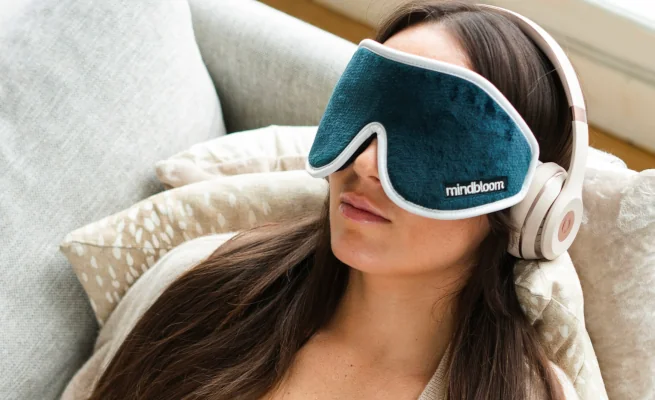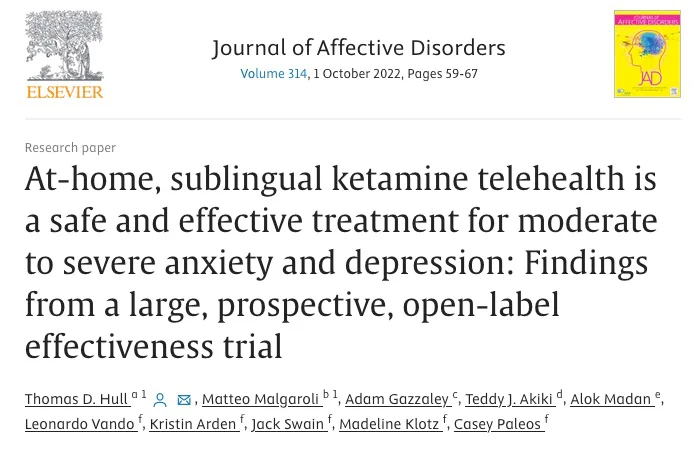[Note: This post contains affiliate links. Read our full affiliate disclosure here]
In this article we’re going to compare two of the most well-known at-home ketamine providers; Mindbloom and Joyous.
Both offer ketamine treatments that patients can undergo in the comfort of their own homes. However, Mindbloom and Joyous have distinct approaches to ketamine dosing, treatment and integration protocols, pricing models, and more.
In this comparison, we’ll examine how Mindbloom and Joyous stack up across all aspects of their ketamine services.

Mindbloom Overview

Mindbloom provides at-home ketamine therapy through a clinician-guided model.
Patients are prescribed personalized doses of ketamine tablets to take on a fortnightly basis along with support to integrate their experience.
As the goal is to compare these 2 ketamine services, I’ll keep this overview section short.
However, I’ve written a detailed review article on Mindbloom which you can read here, and get a $100 discount code here.
Joyous Overview

Joyous lozenge packaging – source
Joyous provides at-home low-dose ketamine treatment.
Their low-dose approach claims (from their FAQ section below) that people will not require down time, special conditions, or “trip sitters”. Suggesting patients can take their low dose and continue living their life.

Whether this is a good thing or a bad thing will depend.
Some may prefer this, while others may prefer to take a small amount of time out of their week for a macro-dose (ala Mindbloom), and then carry on with life without using ketamine daily.
Comparing the Treatment Protocols
Mindbloom and Joyous take different approaches when it comes to ketamine dosing and frequency. This is one of their key differences.
Dose & Absorption
Dose Sizing
Mindbloom uses higher “macro doses” of ketamine designed to induce a psychedelic experience. This is in line with the early ketamine research that used intravenous ketamine to induce an altered state of consciousness.
Doses range from 400 – 750mg.
You take these doses every 2 weeks, undergoing 6-12 sessions over a few months.
Joyous utilizes smaller “microdoses” of ketamine between 10 – 120mg.
You take these daily doses daily. The experience and effects are milder when compared to Mindbloom’s macro doses.
Absorption

Another difference is how the ketamine gets absorbed.
With Mindbloom the user puts the dose in their mouth and holds it there for 7 minutes. At which point they are required to take it out.
In contrast, Joyous offers ketamine lozenges, which are absorbed by mouth in 10 to 15 minutes, without spitting out afterward.
Side Effects & Safety
Ketamine does have potential side effects to be aware of, including:
- Nausea, dizziness, headache
- A brief increase in heart rate and blood pressure
- Distorted sensory perceptions
- Impaired coordination and cognition
These effects are usually mild and dissipate as the medication wears off. But they can be more pronounced at higher psychedelic doses.
Before starting the treatments, both services require medical consultations to screen for contraindications that could make ketamine inadvisable. These include pre-existing health conditions and certain medications.

Given that Mindbloom uses larger doses, the way they manage this risk is you check in with a Mindbloom staff member before your session. They also ensure you have an adult on hand to keep an eye on you in case you run into any issues (referred to as a Peer Treatment Monitor).
Joyous, with their lower doses, monitor you via daily text messages. Whilst this isn’t as involved, their service is very cheap overall, so it may be ambitious to expect comprehensive support.
Integration
It’s possible to split ketamine therapy into 2 key sections:
- The ketamine experience itself (
- Integration of the experience – which can take days/weeks
Whilst it’s possible for a patient to do the integration themselves, it can help to speak to others about this, including trained professionals.
Mindbloom offers:
- 3x 1:1 integration sessions
- Access to professional-led group integration circles (no limit)
- Unlimited support via app, which includes content pathways, curated playlists, an educational library and journaling prompts.
In contrast, Joyous offer:
- Automated daily text messages and check-in surveys
Convenience
Something else to be aware of is the convenience factor.
One benefit of at-home ketamine therapy, versus IV therapy, is the convenience of doing it at home in familiar surroundings. Compared to being in a clinic, hooked up to an IV.
This is all well and good for the higher dose, used infrequently with Mindbloom.
However, for daily doses used by Joyous there is something else to take into consideration.
Whilst the doses are small, there is still an effect on the body, meaning that it’s best taken at a time when one doesn’t have obligations; such as evenings after work.
For someone busy, having to block out a section of the day, every day, during which they don’t drive/operate heavy machinery could be a challenge. Thus, for this reason, daily dosing may be less convenient.

Clinical Research
Currently, most of the research into ketamine therapy has been done using intravenous (IV) administration.
Therefore, it’s interesting to learn of research specific to the oral administration route we’re discussing.
Whilst Joyous have not (so far) performed any clinical trials on their low-dose modality, Mindbloom have.
Over 1,200 Mindbloom clients were part of a peer-reviewed study of ketamine therapy published in the Journal of Affective Disorders showing that Mindbloom drove significant improvements in anxiety and depression.
Participants’ symptoms were measured before and after treatment, and after 4 sessions:
- 89% reported an improvement in symptoms
- 63% reported a 50% or greater reduction in symptoms
- 33% achieved remission (or virtually no symptoms)

Daily Use & Addiction?
One question mark that came up in our research was around the risk of ketamine dependence, specifically when it’s used daily, as is the case with Joyous.
Whilst Joyous do address this specifically on their website (link), quote:
“Ketamine addiction has rarely resulted from a clinically-prescribed course. The doses that Joyous prescribes are low enough that they constitute 10% or less of a typical daily dose for a ketamine addict. Typically, cases of dependence involve daily use of between 1- 4 grams (not milligrams) of ketamine. Ketamine has in fact been found to be a promising treatment for addiction in several studies.”
They don’t however demonstrate any research they have specifically done to test or prove their hypothesis.
Suggesting perhaps that this is something to be mindful of, if embarking on daily use.

Cost and Value Comparison
Mindbloom charges $193 per session, with a 6-session starter package costing $1,158 total.
Their 18-session package brings the per-session cost down to $99. However, that’s quite a long-term commitment.
For a $100 discount on any Mindbloom package, you can use this promotion code.
Joyous costs $129 per month including daily ketamine lozenges. There are no large upfront fees.
For medication and consultations, Joyous appears more affordable.
However, Mindbloom offers more support during sessions through guides. Their integration therapy services also provide added value.
Ultimately, Joyous offers greater value for those primarily seeking medication at an accessible price point.
Mindbloom provides greater value for those wanting a more robust guided psychedelic therapy experience.
| Mindbloom Pricing | Joyous Pricing |
| $193 per session (2 sessions per month) Billed $386/month for 3 months ($1,158 total) | $129 per month |
Patient Reviews of Mindbloom vs Joyous
Looking at independent patient reviews on Reddit and other discussion forums provides unfiltered feedback on real experiences with these ketamine treatment providers.
Here’s a summary of what patients report about Mindbloom and Joyous:
Mindbloom
Pros
✅ Helps depression, anxiety, OCD symptoms for many
✅ Includes a lot of support for post-treatment integration
✅ Accessible compared to in-clinic IV infusions
✅ They have clinical research in 1247 patients, showing strong results for both depression and anxiety.
Cons
❌ Dosing can be an issue, with some people finding they start off too low for too long, whilst others report finding the experience too intense.
❌ Previous scattered reports of poor customer service responsiveness, upcharges, and confusion with billing.
Joyous
Pros
✅ Improves mood, motivation and outlook over time
✅ Low monthly cost
✅ Gentle psycholytic effects vs intense psychedelics
Cons
❌ Lower dose may be less effective for some
❌ Requires use of ketamine daily
❌ Very limited support with integration
❌ No clinical research on their specific methodology
❌ Customer service responsiveness varies
While subjective, these user perspectives highlight the unique benefits and drawbacks associated with each provider’s model.
Roundup
Mindbloom and Joyous both offer legitimate at-home ketamine treatment options.
Key differences come down to their pricing and dosing protocols.
For example, if cost is a particular concern, Joyous may be the better fit. However, if you want a more intensive psychedelic experience (more akin to IV ketamine), Mindbloom may be preferable (see $100 discount code).
Whichever option you choose, be sure to thoroughly discuss it with a doctor to determine if ketamine treatment of any kind is appropriate for your health circumstances.
Further Reading
If you would like a more in-depth analysis of Mindbloom, please see our Mindbloom Review article.


